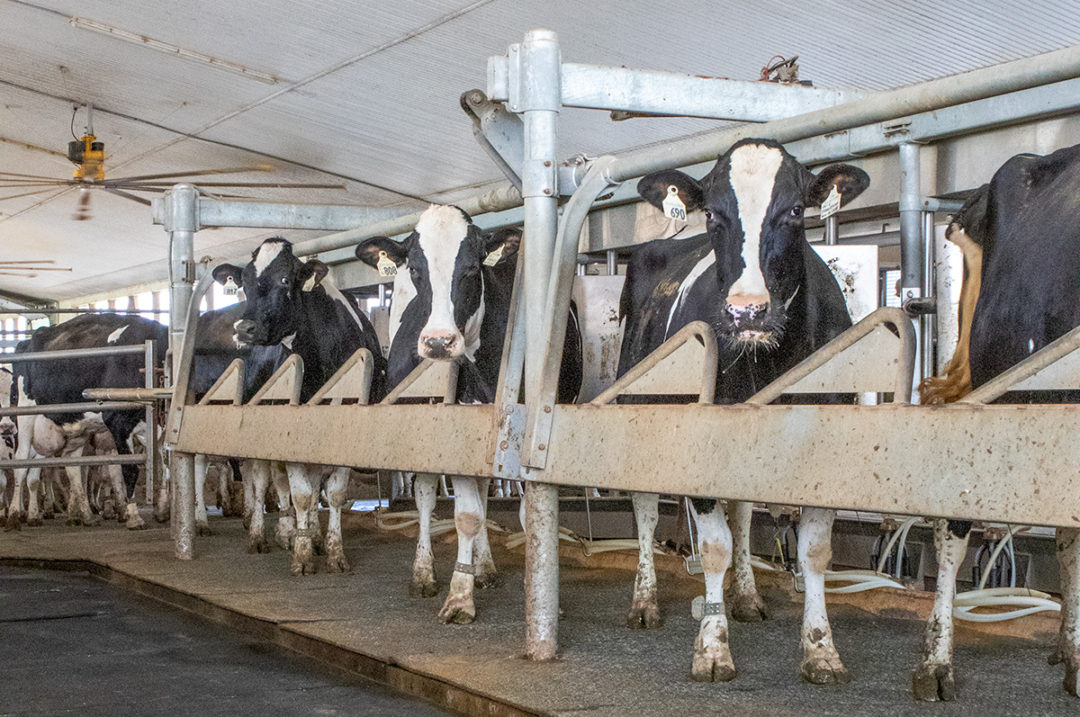Some outlooks for 2024 show dairy profitability decreasing up to 80% from the last two years. Decreasing profitability will force dairy farmers to become more efficient by focusing on lowering costs and increasing income. One potential way to reduce costs is to become more selective about the cows that go through the milking system.
Making these decisions is not easy. We all have favorite cows we want to keep around. However, there comes a time when all cows have to find a different career path. Economic culling decisions can be very complex and challenging to make. Ensuring every cow that passes through the milking system holds value will help lead to increased farm profitability.
Giving cows value
Assigning some value to cows in the herd will better indicate who in the herd is aiding in profitability and who is just taking up bunk and milking system space. Many different options exist to calculate potential cow value. Evaluating a cow’s value at least once throughout the lactation will aid in making voluntary culling decisions.
Retention pay-off
Calculating a cow’s retention pay-off (RPO) value is the optimal way to determine culling. An RPO calculation values the cow compared to her potential replacement in a given timeline. An RPO value of zero would indicate the optimal time of culling. However, RPO value can be very complicated to calculate. The University of Wisconsin has an RPO calculation tool that can give herd and cow-specific estimates.
Income over feed costs
Another option for giving cows value is calculating the cow’s milk production value minus feed costs for the lactation. A positive value would indicate a profitable cow. Be cautious of values close to zero because feed costs will not represent the only costs throughout the cow's lactation. Feed costs alone will represent 80%-95%.
When comparing income over feed costs to make culling decisions, be sure to compare the cows to similar herdmates (lactation, days in milk and pregnancy status). The value of a future calf cannot be ignored when determining the cow's value.
Break-even costs
A University of Minnesota study found that profitable farms tend to have a higher percentage of the herd above their cumulative break-even point. The cumulative breakeven considers both heifer raising and milk production costs. Cows in their first and second lactation are still paying for their raising costs. A larger percentage of the herd above the break-even cost will lead to a more profitable dairy operation.
Cow-level decisions
Many different cow-level factors will impact the cows’ value. Poor reproductive performance, health events and lameness are the main reasons cows are culled. These costs must be considered when determining an animal's economic value. Metabolic diseases can range from $100 to $400. Mastitis and lameness cases also fall into this range. For a cow producing 72 pounds of milk per day, it would take that cow 20 days to pay off the average of these disease costs. These additional costs will increase the break-even point for the cow in the herd. Cows with multiple health events could be taking up space for healthier replacements.
The welfare of the animal needs to be considered when making culling decisions. If a cow is continuously lame or has chronic mastitis, culling is most likely the best option.
Herd population
The herd's cow population will impact the farm's total profitability. Average days in milk and age are two easily measured herd statistics and benchmarks to help farms reach ideal herd milk production.
Days in milk
Peak milk is the amount of milk a cow produces on her most productive day. Peak yield occurs between 50-100 days in milk. Thus, a herd whose average days in milk is closer to 50-100 will be more profitable because of the increased milk production. However, if the days in milk of the herd were too low – less than 150 days – this means we would have a lot of fresh cows, which can pose other problems. A herd average of 160 to 180 days in milk would be ideal. Having an average above 200 days should be concerning. High average days in milk would mean late-lactation cows are taking up too many milking spaces. Reproduction management should be evaluated if days in milk are too high.
Lactations
As discussed earlier, cows in their first and second lactations are still paying for their heifer-raising costs. Thus, having too young of a herd may be hindering profitability. Younger cows may be taking up space for older, more profitable animals. A University of Florida study found that herds with a higher proportion of cows in the third and fourth lactations may be more profitable. First-lactation animals only produce 80% to 85% of the milk yield of their third-lactation-and-greater herdmates. The higher production of older cows would outweigh the younger animals' genetic potential, especially looking at yearly financials. Primiparous cows should make up no more than 40% of the lactating herd.
Determining cow value is a useful tool to determine who in the herd is taking up space in the milking system and who is contributing to the farm’s profit. Cows that do not balance their income over feed costs, have chronic health events or have increased days open are taking up space. However, allowing cows to finish a lactation may be profitable if they are able to comfortably reach peak milk. Problem cows should be labeled “do not breed” (DNB) if being culled at a later time. Labeling cows DNB will avoid unnecessary breeding costs.
A cow-level break-even analysis can help make culling decisions easier. Replacing animals that are not going to break even in a lactation may be a way to increase profitability on the farm. The number of available replacements must be considered when making voluntary culling decisions. Aggressive culling to remove nonprofitable cows should be done when replacements are available or can be purchased at a reasonable price. Remember that relying on heifer replacements will decrease the herd's average age, leading to lower milk yield.






